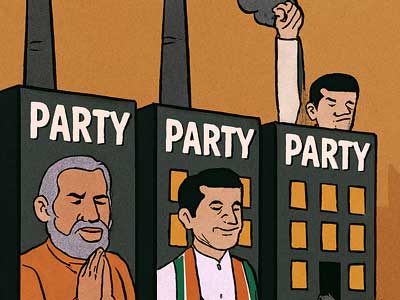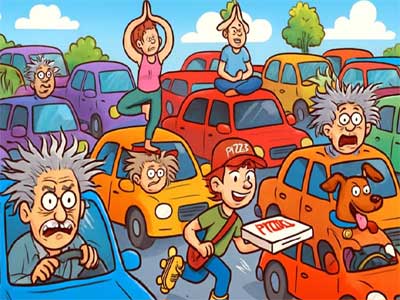The sacred temples of Braj, once vibrant with the divine strains of Dhrupad and Haveli Sangeet, now echo with a different tune. The soulful melodies that celebrated Lord Krishna's love have been largely drowned out by the blare of loudspeakers churning out Bollywood-inspired folk music. The purity of Haveli Sangeet, a devotional art form deeply intertwined with the region's spiritual heritage, has been replaced by a cacophony of commercialized sounds.
Historically, Braj was a land steeped in devotion and music. Swami Haridas, a revered figure in Hindustani classical music, initiated a tradition that flourished in temples like Bankey Bihari. Haveli Sangeet, born from the Bhakti movement in the 15th century, became an integral part of temple rituals, festivals, and daily worship. It was performed before "Thakurji gave darshans to waiting bhakts," enriching the spiritual experience of devotees. Poets like Soor Das, the blind bard of Braj Bhasha, and the Ashtachhap poets nurtured this tradition, weaving devotional lyrics into intricate musical compositions.
Read in Hindi: बृज के मंदिरों से लुप्त हो रही हैं संगीत की परंपराएं
Dr Jyoti Khandelwal, a respected music and dance guru, explains, "The term 'haveli' refers to a traditional Indian mansion or residence, which often housed these performances. These songs were primarily lyrical offerings in praise of Krishna, encapsulating the philosophical essence of love and devotion while employing simple yet evocative lyrics. These days, some temples in Sri Nathdwara, Kankroli, and some Vaishnav baithaks in Gujarat, are keeping alive this valuable parampara."
The music itself is characterized by its distinctive use of ragas and semi-classical forms, often drawing inspiration from folk traditions. The melodies capture the emotional spectrum of Krishna bhakti, from the ecstasy of divine love (shrngara) to the poignant yearning of separation (viraha). Instruments like the harmonium and percussion create a rich auditory tapestry that complements the lyrical depth.
Famous exponents of Haveli Sangeet, such as the legendary Thumri maestro Pandit Kumar Gandharva and the vocal virtuoso Shankar Lal, played a crucial role in preserving and propagating this art form. They not only upheld the sacred traditions but also infused their interpretations, modernizing the genre while respecting its roots. Their recordings brought Haveli Sangeet to a wider audience, contributing significantly to its preservation.
Today, even in Vrindavan and Mathura, once strongholds of this devotional art, only a handful of musicians struggle to keep the tradition alive. The Nimbarkacharya and Radha Ballabh sects still perform Samaj Gayan on special occasions, but temple music, in general, is in decline. Music lovers lament the overshadowing of Haveli Sangeet by commercialized bhajans, often lacking the depth and artistry of the traditional form. Listening to a true exponent of Dhrupad or Haveli Sangeet is a sublime experience, transporting the listener to a realm of spiritual ecstasy.
The reasons for this decline are multifaceted. Lack of institutional support and patronage has dealt a severe blow to Haveli Sangeet. Historically, it thrived under the patronage of temple authorities and wealthy devotees. The rise of Bollywood and its pervasive influence on popular culture has also contributed to the shift in musical tastes. Fusion music and so-called ‘experimental’ sounds, while sometimes innovative, can also erode classical heritage if not approached with sensitivity and respect for tradition.
The loss of Haveli Sangeet is not just a cultural tragedy; it is also a spiritual one. It represents a disconnect from a profound form of devotion that has inspired countless souls over centuries. It is a silencing of the echoes of Krishna's love in the very land where that love was celebrated through music. Urgent attention and concerted efforts are needed to revive this vanishing art form, nurture the remaining musicians, and inspire a new generation to appreciate the beauty and spiritual depth of Haveli Sangeet before its melodies are lost forever.


















Related Items
Rich traditions of ritual theatre in India
Sex, Love and Family: What is the right perspective?
Indian matrimony, A sacred bond or an entertaining reality show!